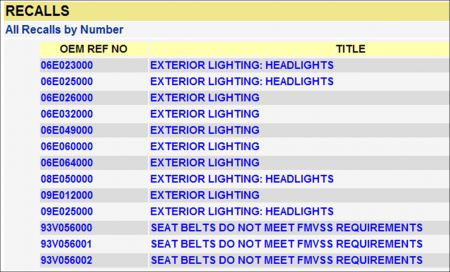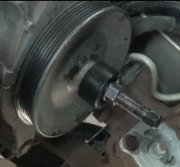Hello -
Thanks for the info......... As for the model... Yes in some cases it does matter. Our manuals are set up by model... Specific model... Many times when we are looking up info we even need to know the 5 or 8th digit of the VIN. Many times the TSBs are specific to certain models and at times we may even ask the full VIN or the month/year manufacture as some items only apply to certain numbers off of the assembly line.
So... Long story short... It helps us, and you, be more specific to just your vehicle so we aren't running bad rabbits... Plus... It helps you know your vehicle better. We have also started chasing a problem and ask the customer a few questions and they realize they are off a year or so... Or have given us other info about the car that is incorrect. So since we can't see the car you become our eyes, ears etc and we work through it together. Hope that helps.
My guess would be your fuel gauge or sending unit may be wack.....
Here is a couple of tests you can do to check it out. If you have never messed with
READ THE CAUTION
TESTING
FUEL GAUGE TEST
CAUTION: Turn ignition off before fuel gauge pointer reaches "F" mark. Failure to turn ignition off before pointer reaches "F" mark may damage fuel gauge.
1. Ensure ignition switch is in OFF position. Check fuse No. 1 (10-amp) in dash fuse box. Remove fuel gauge sending unit access cover in luggage compartment. Disconnect 3-pin connector from sending unit.
2. Connect voltmeter positive lead to Yellow/White wire and negative lead to Black wire. Turn ignition on. Voltage should be 5-8 volts. If voltage is incorrect, check for open circuit in Yellow, Yellow/White and Black wires. Check for poor ground connection.
3. Turn ignition off. Install jumper wire between Yellow/White wire and Black wire. Turn ignition on. Ensure fuel gauge pointer starts to move toward "F" mark on gauge. If fuel gauge pointer does not move, replace fuel gauge. If fuel gauge is okay, check fuel gauge sending unit.
FUEL GAUGE SENDING UNIT TEST
1. Ensure ignition switch is in OFF position. Remove fuel gauge sending unit access cover in luggage compartment. Disconnect connector from fuel gauge sending unit.
2. Remove fuel gauge sending unit. Use an ohmmeter to measure resistance between fuel gauge sending unit terminals with sending unit float held at empty (down), half-full (middle) and full (up) positions. Compare readings with FUEL GAUGE SENDING UNIT RESISTANCE table. If resistance values are incorrect, replace fuel gauge sending unit.
FUEL GAUGE SENDING UNIT RESISTANCE
Float Position Ohms
Empty 105-109
Half-Full 27.5-37.5
Full 2-5
Friday, September 11th, 2009 AT 10:33 PM



